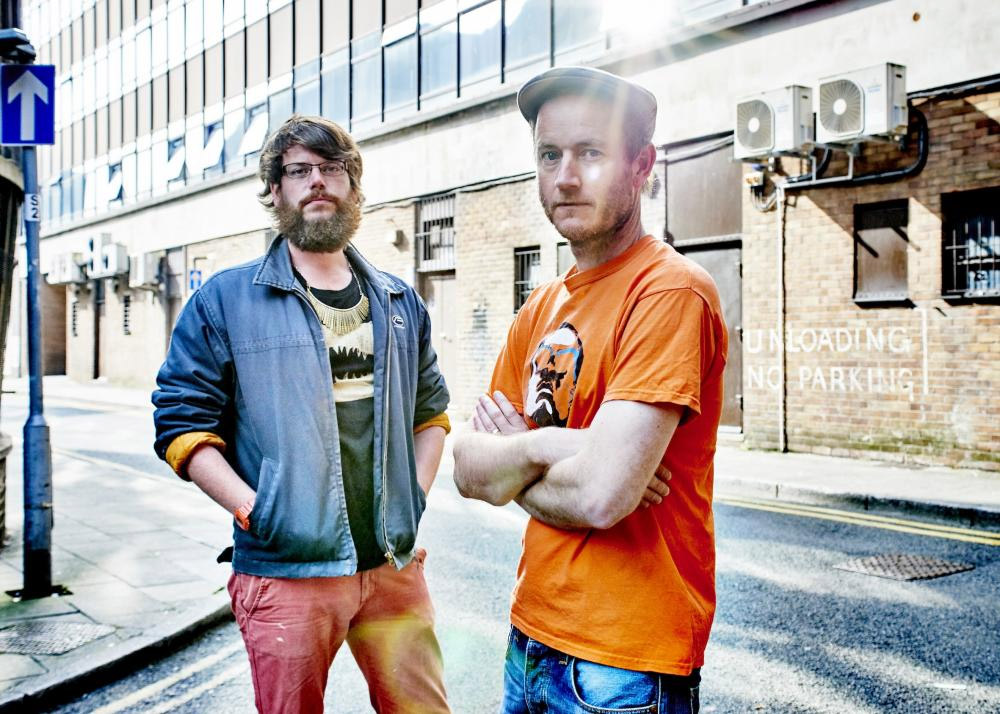The immersive sounds of Robinson. The Other the Other Island capture the struggle with loneliness of Defoe’s Robinson Crusoe and the sensual writing of Michel Tournier’s Friday with softly spoken pages from the book, water dripping, waves, and a mosquito buzzing in your ear. What makes this rendering of Robinson original and innovative is the sound system used that mimics human hearing through binaural recording and the sense of urban isolation as the audience listens to the play through headphones. The architect of the sound world of Robinson is John Norton, artistic director of Give It A Name

John says ‘hello’ to the recorder on my phone. He’s disappointed that there are no sound waves. He is an actor, director, sound designer, and has spent many years as DJ. He writes audio drama and experiments with sound. Married to theatre director Mathilde Lopez, he often designs the sound world for her plays, as he did, in collaboration with Branwen Munn, for the recent Les Misérables.
This time, John has created a three-dimensional sound experience with binaural mics for the play Robinson. The Other Island, bringing voices, sounds, and music directly into the ears of each audience member
getthechance.wales/2019/05/11/review-robinson-the-other-island-give-it-a-name-by-eva-marloes/
Binaural recording aims to reproduce human hearing. Each of our ears perceives sound differently. We hear a sound coming from one direction first with the ear closer to the source of the sound. Binaural recording is fed into headphones making possible to hear different sounds in each ear and the location of their source. A sound can come not only from the left or the right, but also top, bottom, front, or behind the listener. This technique allows a three-dimensional experience of sound. Usually, binaural recording utilises two mics inside a ‘dummy head’ that replicates an average human head. For Robinson, John has used in-ear mics to get the experience of the actor into the ears of the audience.
John researched immersive sound for theatre after being granted an Arts Council Wales, Creative Wales Award in 2012-2013. He tried different techniques, but was taken in particular by the possibilities of binaural. He tells me, ‘What I really loved about binaural is that it really is how we hear. I got very excited.’ After the research period, he ‘played around’ with in-ear binaural mics for various projects. The choice of in-ear mics, instead of dummy head recording, offers the advantage of hearing what actors hear in their ears. He explains, ‘What I like about having an in-ear mic is having the internal perspective of the actor live. What you will never have with the dummy head is when Luciana (Luciana Chapman plays Bianca in Robinson) swallows the water, you hear it as if it’s inside your own head. For me that’s just another level of crazy intimacy that I was intrigued by. That’s one of the reasons why we went for that for this show.’
Enthusiastic of the technique is also Jack Drewry, composer, sound designer and theatre maker, who is sound designer and tech on Robinson. Jack tells me that the use of movable in-ear binaural mics is what is most innovative and exciting of Robinson’s sound experience. He says, ‘The use of wireless transmission through the ears is the immersion into the actor, the Reader’s (Bianca) world. That’s the thing that is new and exciting. What happens if you choreograph the sound around the actor as the microphone? The actor becomes the microphone. Whatever happens around the actor you hear from the actor’s perspective, you hear what they’re hearing.’

This technique captures the solitude of urban life amidst contrasting noises. John says, ‘We felt that putting the audience in headphones is a really good image of contemporary solitude. If you look at the bank of audience you can easily mistake them for commuters on a train, in their own headphones. There’s something interesting in isolating each audience member while they have shared experience.’ Robinson immerses you in the solitude of a man stranded on an island for 28 years and of a young woman living alone in a city. The loneliness of Robinson Crusoe leads him to have auditory hallucinations, something John experienced as a child. I realise that the chaotic music of the book club moments in the play may suggest that sense of auditory disorientation.
The soundscape in Robinson not only serves to immerse the audience in the actor’s perspective, but it also creates a sound world, the environment where the actor is placed. The sounds are suggestive of Bianca’s flat and of Robinson’s island. For the latter, mostly Caribbean music has been used to evoke the image we often have of an island. In addition, John tells me, environmental sounds, such as the traffic outside the flat and the waves of the sea, help listeners tune their ears to sounds. Gentle sounds, such as rustling or crinkling sounds, are also used in Robinson to elicit in some listeners a tingling sensation through ASMR, or autonomous sensory meridian response. Robinson is an all-round sound experience.
Jack tells me that ‘normally sound supports the action; it’s not front and centre. In this project the sound world is a big part of the show and the actors are always feeding into it. It’s much more of a magnifying glass of my design that it has ever been. In this project the sound from the mixing deck doesn’t go to speakers but to everyone’s ears, directly streamed into the audience.’ As I watched and listened to the show, I noticed sounds made by Robinson came from the back to my right although he was in front of me on the left. The experience of the eyes doesn’t necessarily match that of the ears. For some, this might be a little too confusing, however Robinson is not a traditional play but a meditative experience that at times is best felt with one’s eyes closed.
For more on spatial audio, please check BBC Academy h
